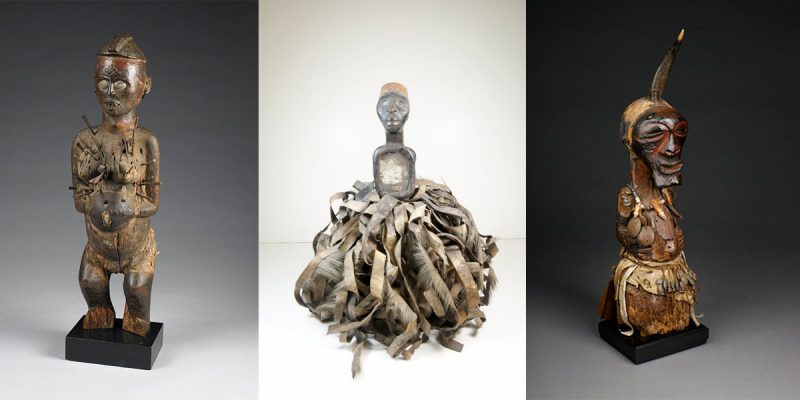Fetishes were protective figures used by individuals, families, or whole communities to destroy or weaken evil spirits, prevent or cure illnesses, repel bad deeds, solemnize contracts or oath-taking, and decide arguments. A diviner or holy person would activate the statue, using magical substances. Fetishes gained power and were effective because people believed in them.
The nkondi are the most powerful of the nkisi (spirits, or an object that a spirit inhabits). Religious idols, made by the Kongo people of the Congo region, used to identify and hunt down unknown wrongdoers such as thieves, and people who were believed to cause sickness or death by occult means.
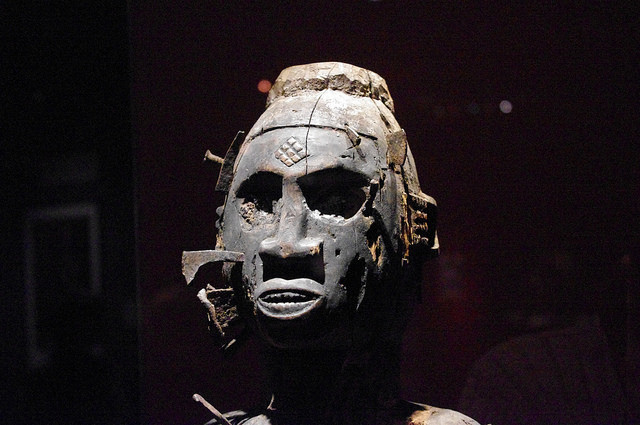
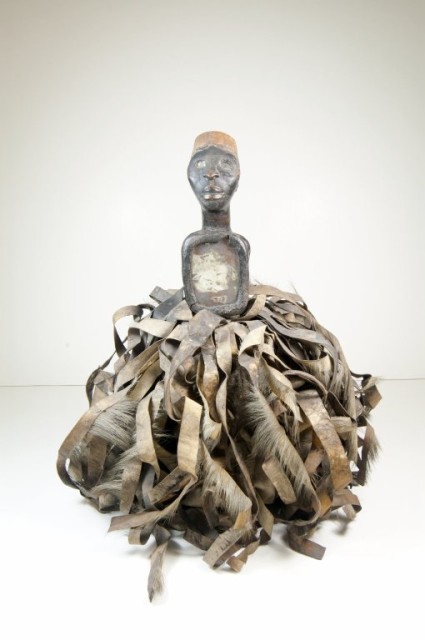
They were also used to punish people who swore false oaths and villages which broke treaties. To inspire the nkondi to action, it was both invoked and provoked. Invocations, in bloodthirsty language, encouraged it to punish the guilty party. It would also be provoked by having gunpowder exploded in front of it, and having nails hammered into it. They were also used to literally “hammer out agreements”…with clear implications as to what would happen to people who broke the agreements.
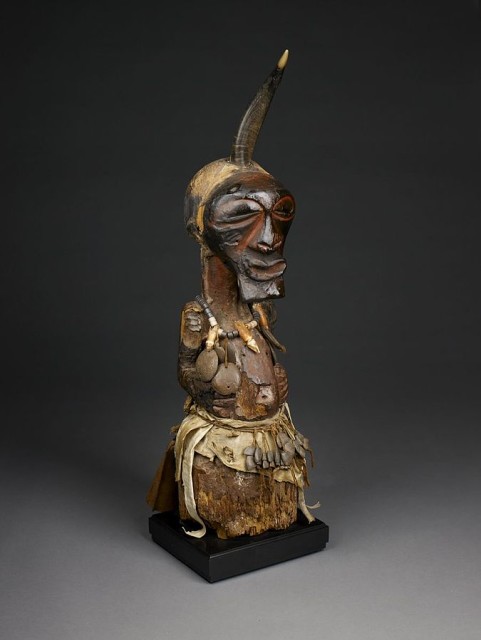
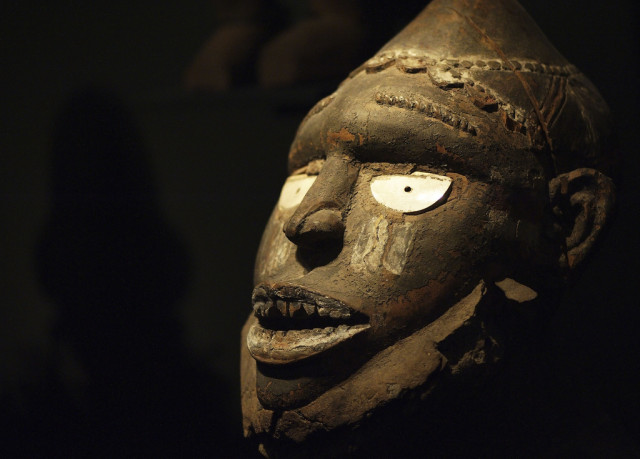
Many nkondi were publicly held and were used to affirm oaths, or to protect villages and other locations from witches or evildoers. This is achieved by enlisting spiritual power through getting them to inhabit minkisi like nkondi. Because they are aggressive, many nkondi with human figures are carved with their hands raised, sometimes bearing weapons.
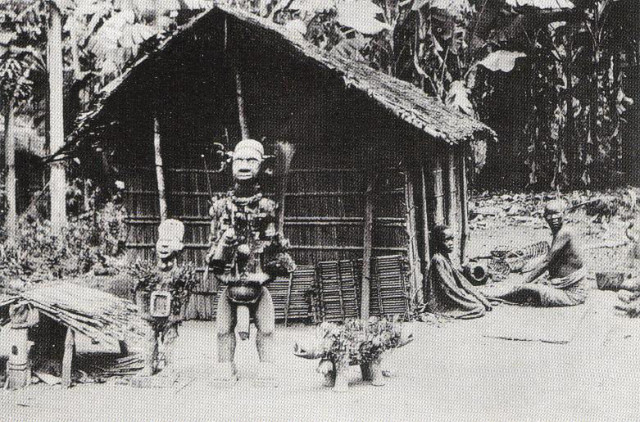
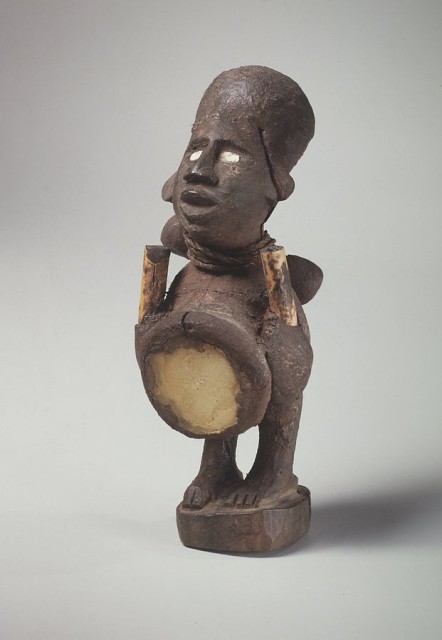
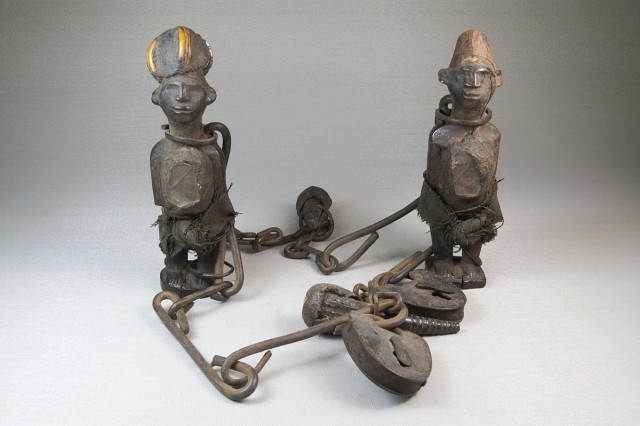
Nkondi with nails were made at least as early as 1864, when the British Commodore A. P. Eardley Wilmont acquired one while suppressing Solongo (Soyo) piracy at the mouth of the Congo River, a piece that was the subject of a contemporary painting and is presently in the Royal Geographical Institute in London. Another early description and illustration of a nailed nkondi (named Mabiala mu ndemba, and described as a “thief-finder”) is found in the notes of the German expedition to Loango of 1873-76, so by that time the specific practice of nailing was well established.
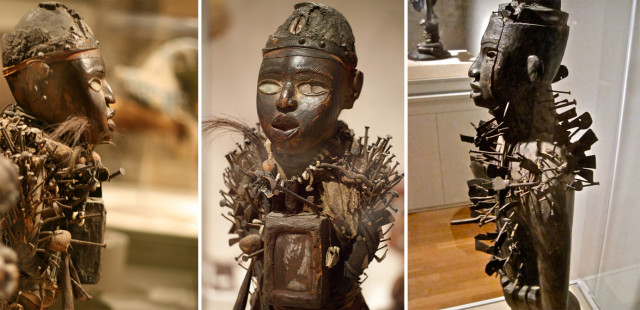
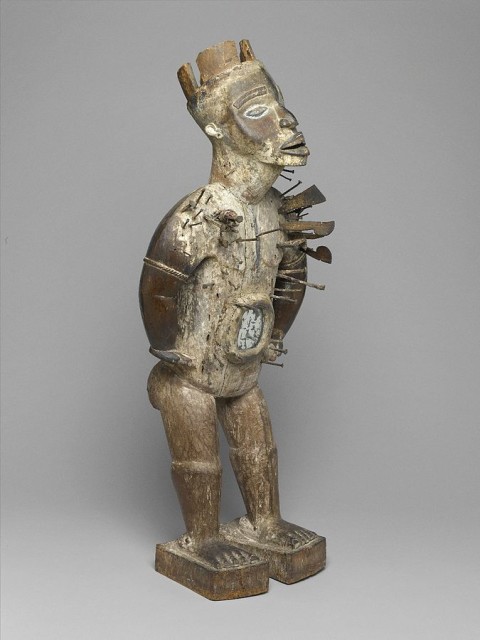
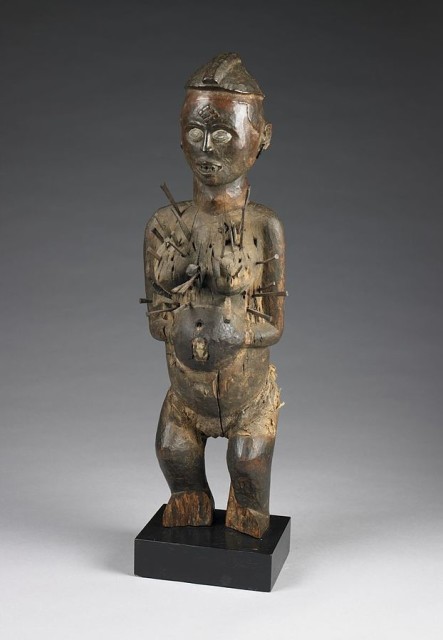
Today the beliefs that underlie the use of minkisi are still prevalent in the Kongo area; however, minkisi no longer take the elaborate figural forms of the past.
